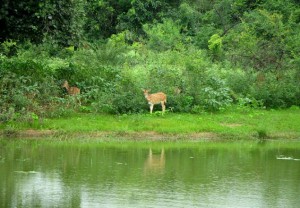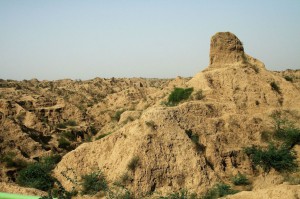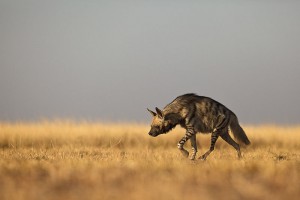Tourist Attraction Of Dholpur
Dholpur is a sleepy little town in Rajasthan, full of historical forts and monuments. Being in the eastern most parts of Rajasthan, Dholpur is vry close to the border of neighbouring state Uttar Pradesh and lies just 55 kms from Agra and Gwalior. Dholpur is also famous for its wonderful sandstones, especially the red sandstone, which was also used to build the famous Red Fort in Delhi. Dholpur has its history written behind remains from the Mahabharata period to the relatively recent Mughal era, and several forts and lakes form a part of it. Earlier known as Dhawalgiri and later on as Dhaulagir it is now always referred to as Dholpur.
Ramsagar Sanctuary
Contains picturesque Ramsagar Lake, which supports rich aquatic life including fresh water crocodiles and a number of fishes and snakes. Water birds such as cormorants, white-breasted water hen, moor hen, jacanas, river tern, ringed plover, sand piper, and green and purple herons are quite common. During winter months migratory ducks and geese visit the lake in good numbers.

Rana Ram Singh of Dholpur was the Jat ruler of the princely state Dholpur (1901–1911) in Rajasthan, India. He was from Bamrauliagotra of Jats. He was born on 26 May 1883 and succeeded RanaNihal Singh in 1901 after his death. RanaNihalsingh was not of age when ascended to the throne. He got full rights in March 1905. Nihal Singh constructed Nihal tower. His successor was RanaUdaybhanu Singh.
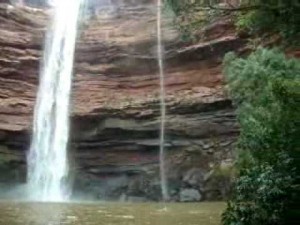
A waterfall in Sarmathura. It is the main tourist spot in whole district. It is visible in rainy season [July–September]. Besides this, Damoye has a long and green forest range with wild animals.
The Machkund Temple
Muchchhkund is about 4 km from the town of Dholpur. It is an ancient sacred place. It commands a picturesque view. The place is named after Raja Muchchhukand, the 24th of the Suryavanshi Dynasty (the solar race) who is said to have reigned nineteen generations before Lord Ram. According to legend, Raja Muchchhkund was sleeping here when demon KaalYaman (while pursuing lord Krishna) accidentally woke him up. The demon KaalYaman was burnt to ashes because of a divine blessing to Raja Muchchhkund. It is now a sacred place for pilgrims.
Talab-E-Shahi
27 kilometres from Dholpur (and 5 kilometers from Bari) is a picturesque lake called TalabShahi. The lake and the palace were built in 1617 A.D. as a shooting lodge for Prince Shah Jahan. The palace and the lake were later maintained by the ruler of Dholpur. The lake attracts a large number of winter migratory fowl such as pintail, shoveller, red crested pochard, common pochard, tufted duck, garganey teal, wigeon and Gadwall.
Shergarh Fort
It is an old fort of historic importance, located toward the south of Dholpur tower. This monument was built by Sher Shah Suri on the site of an earlier Hindu fortress.

Dholpur Combined Cycle Power Station
Dholpur Combined Power Station is located in Dholpur City in eastier part of Rajasthan State and is situated above 7 km from District HeadQuarter on the bari Road near Chawani. Based on Gas This Project is Compatively safe in view of environment & water pollution. 70 Meter high stack has been provided to release fuel gases into the atmosphere so as to disperse the emitted matter over a wide spread area. This is the project of Rajasthan RajyaVidyutUtpadan Nigam Ltd. The Installed Capacity of three units of Dholpur Combined Power Station is 330MW.
Ravines of Chambal
Technically, ravines are formed when the upper layer of vegetative cover is not strong enough and the roots of trees are unable to hold and bind the soil together. Constant rainfall erodes the soil and washes away the crust of the earth. Consequentially, the water flow turns into drains, creating cracks. In due course of time, these cracks are further eroded, and become large ravines. The Ravines of Chambal derives its name from Chambal River, has been a safe heavon for gangs of dacoits for a number of decades.The Chambal ravine or 'beehad' has harbored dacoits (bandits) for centuries. One of the famous dacoits were PAN SINGH TOMAR Phoolan Devi, LokmanDikshit, Man Singh &fakkad Baba who terrorised the entire Chambal valley. It is also known as the " VeerBhoomi Chambal ".
Van Vihar Wild Life Sanctuary
Van Vihar, an old wildlife reserve of the rulers of Dholpur is spread over an area of 59.86 km over Vindhyan Plateau.
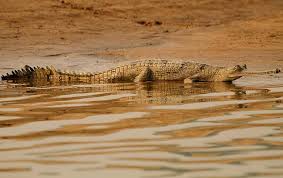
National Chambal (Gharial) Wildlife Sanctuary
The Chambal river remains one of north India’s most unpolluted rivers, home to a rich diversity of flora and fauna. National Chambal (Gharial) Wildlife Sanctuary contains the rare Ganges river dolphin. The sanctuary was founded in 1978 and is part of a large area co-administered by Rajasthan, Madhya Pradesh and Uttar Pradesh, within area of 5,400 km². Approximately 400 km of the river is within the reserve. Apart from the Ganges river dolphin, the other inhabitants of the sanctuary include mugger crocodiles and gharial (Gavialisgangeticus). Migratory birds from Siberia form its rich avian fauna.
Sher Shikar Gurudwara
a Sikh pilgrimage site in Machkund, Dholpur, associated with the history of sixth Sikh Guru Hargobind Sahib ji.


